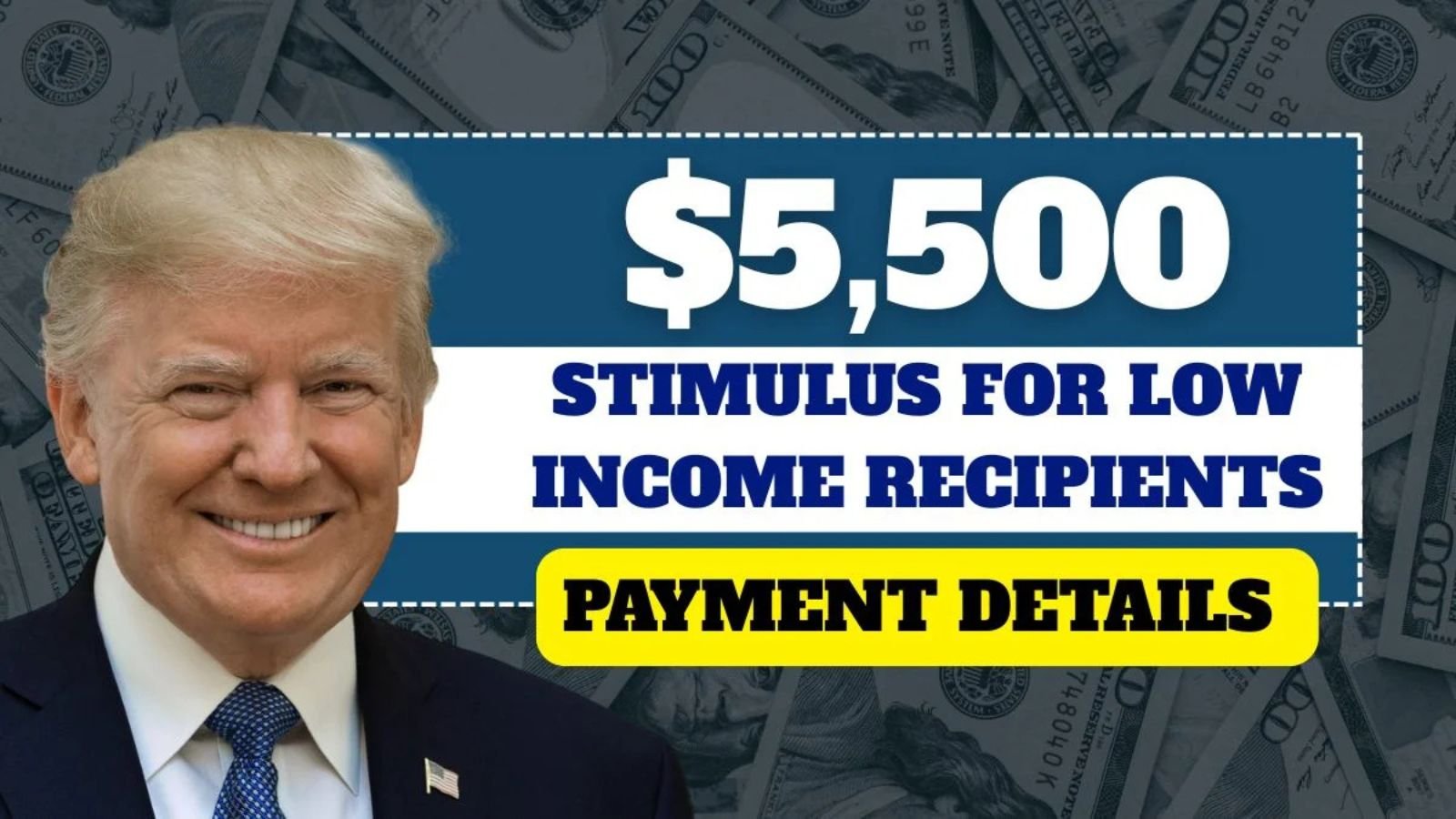In early April 2025, social media feeds, online forums, and even certain news blogs were buzzing with a claim that grabbed the attention of millions of Americans. The posts stated that the U.S. government is preparing to issue a new round of stimulus checks worth either $2,500 or $5,500 Stimulus payments. According to these viral claims, the funds would be sent to SSI (Supplemental Security Income) recipients, SSDI (Social Security Disability Insurance) beneficiaries, VA (Veterans Affairs) participants, and low-income taxpayers.
For individuals and families already struggling with inflation, rising housing costs, and day-to-day expenses, this news seemed like a ray of hope. After all, the idea of a $5,500 Stimulus payment landing directly into their bank account felt like a game-changer. But as with many viral financial stories, the central question remains: Is this news real, or is it just another rumor fueled by social media speculation?
Let’s explore this topic in depth by looking at the facts, how such rumors spread, what official statements say, who could be eligible if it were true, and what people should realistically prepare for in the event of future financial aid programs.
The Lincoln Wheat Penny Valued at $144K, Still in Circulation?
The Current Status of the $2,500 and $5,500 Stimulus Claims
The most important thing to clarify right away is this: as of now, there has been no official confirmation from the U.S. government or the IRS regarding a new $2,500 or $5,500 Stimulus payment.
This means that any claims suggesting that checks are already approved or being distributed are not accurate. No such program has passed through Congress, and no statement has been made by federal agencies such as the IRS, Social Security Administration (SSA), or the Department of Veterans Affairs.
At the same time, it is worth noting that government relief programs are not unheard of. In times of severe economic stress, recessions, or national crises, the U.S. government has stepped in with direct financial assistance. This historical precedent is one of the main reasons why rumors like the $5,500 Stimulus story spread so quickly—it doesn’t sound impossible, even if it hasn’t been confirmed.
Currently, the IRS is still processing Recovery Rebate Credits for certain individuals who never received their 2021 stimulus checks. Roughly one million people remain eligible for payments of up to $1,400, but these are tied to older programs, not any new relief plan. Therefore, it’s important not to confuse these ongoing credits with fresh rumors about a $5,500 Stimulus.
How Did the $5,500 Stimulus Rumor Begin?
Most financial rumors originate from small pieces of speculation that snowball into something larger. In this case, several blogs and social media channels speculated that the government might consider another stimulus round due to ongoing inflation and economic pressure on households.
Some content creators presented these ideas as “breaking news” or “confirmed updates”, even though no official agency had announced anything. On platforms like YouTube and TikTok, catchy titles and thumbnails made it seem like the $5,500 Stimulus was already guaranteed, which fueled rapid sharing and engagement.
If we compare this with history, every real stimulus program was passed during a major financial or national crisis through an official act of Congress:
-
2001: $300 stimulus payments during the early 2000s recession.
-
2008: $600 stimulus payments during the Great Recession.
-
2020: $1,200 stimulus checks during the first wave of the COVID-19 pandemic.
-
2021: $1,400 stimulus checks as part of the American Rescue Plan.
Given this timeline, it becomes clear that unless Congress passes new legislation and the President signs it into law, a $5,500 Stimulus remains purely speculative.
Who Could Qualify If a $5,500 Stimulus Became Reality?
Even though the news is currently unverified, it’s still helpful to look at typical eligibility criteria based on past stimulus programs. If such a payment were approved in the future, likely recipients would include:
-
Single tax filers: Those earning up to $75,000 annually.
-
Married couples filing jointly: Those earning up to $150,000 annually.
-
Reduced amounts for individuals earning above these limits, with a complete phase-out at higher income levels.
-
Automatic payments to SSI, SSDI, and VA beneficiaries who already receive federal benefits.
-
Extra support for dependents, such as children, students, or individuals with disabilities.
These categories reflect a consistent pattern in previous relief efforts, where the government targeted those most in need while phasing out benefits for higher earners.
How Would the $5,500 Stimulus Be Distributed?
If approved, the delivery system for a $5,500 Stimulus would likely follow the same structure as past payments. There are generally three methods used by the IRS and SSA:
-
Direct Deposit – The fastest and most secure method. Payments go directly into recipients’ bank accounts.
-
Paper Checks – Sent to individuals without direct deposit setups, though these take longer to arrive.
-
Prepaid Debit Cards – Used for individuals without traditional banking access.
For this reason, keeping your banking information and address updated on the IRS and SSA websites is always recommended. In past stimulus rollouts, millions of people faced delays simply because their details were outdated.
When Could Payments Arrive If Approved?
The timeline for any potential $5,500 Stimulus would depend heavily on Congressional approval. Historically, the process works like this:
-
Congress debates and passes legislation.
-
The President signs the bill into law.
-
The IRS begins processing payments, often within 2–3 weeks.
From that point, the payment sequence usually unfolds as follows:
-
Direct deposits first.
-
Paper checks next.
-
Prepaid debit cards last.
In past programs, most eligible Americans received their payments within 1 to 3 months after approval. However, as of now, no such legislation has been introduced for a $5,500 Stimulus, so this timeline remains hypothetical.
What Should You Do to Prepare?
Even though there is no confirmed $5,500 Stimulus, it never hurts to be prepared for future relief programs. Here are some practical steps you can take:
-
File your tax returns on time. Stimulus checks are usually calculated based on your latest tax return.
-
Update your banking and mailing information with the IRS and SSA.
-
Rely only on official sources. Check the IRS website or SSA.gov for updates rather than relying on social media rumors.
-
Use the “Get My Payment” tool when available. In the past, this tool allowed individuals to track their payment status quickly.
By staying prepared, you ensure that if a real stimulus does get approved, you won’t face unnecessary delays in receiving your funds.
Conclusion: The $5,500 Stimulus Remains a Rumor
At this point, the $5,500 Stimulus remains nothing more than a viral rumor. Neither the IRS nor the U.S. government has made any official confirmation about new stimulus checks in 2025.
That being said, it’s understandable why this rumor caught on so quickly. For families relying on SSI, SSDI, VA benefits, or low-income earnings, the thought of an extra $5,500 Stimulus feels life-changing. And while it may not be true today, history has shown us that relief packages can and do happen when the country faces significant economic challenges.
Until then, the best approach is to remain cautious, avoid misinformation, and keep financial information updated in case a legitimate program is introduced in the future.
FAQs About the $5,500 Stimulus
Q. Is the $5,500 Stimulus confirmed by the U.S. government?
A. No. As of now, there is no official confirmation from the U.S. government or IRS about such a payment.
Q. Who would qualify if a $5,500 Stimulus were approved?
A. Likely low-income individuals, SSI, SSDI, VA beneficiaries, and taxpayers within certain income limits.
Q. How would the payment be distributed?
A. Through direct deposits, paper checks, or prepaid debit cards—similar to past relief efforts.
Q. When could payments be issued?
A. If approved, payments could start within weeks, beginning with direct deposits.
Q. Where can I check my payment status?
A. Always use the official IRS “Get My Payment” tool or the SSA website when updates are announced.
Some Important Link
| Download News APP | Click Here |
| WhatsApp Group | Click Here |
| Home Page | Click Here |





